Indigenous peoples in Australia are the world's oldest existing culture on earth. According to archaeological evidence, their history ranges from 50,000 to 80,000 years to XNUMX XNUMX years old. Indigenous Australians have preserved their history through stories called The Dreamtime, Dreamtime stories or Creation stories.
These stories describe how the land came into being as a creation of the beings of their ancestors, who still exist in the land today. These stories illustrate the deep and complex relationship that indigenous peoples in Australia have with the country. Dreamtime stories illustrate the strong and unique bond Indigenous Australians have to the country, what Australians today call the country.
Native Australians see the world Dreamtime
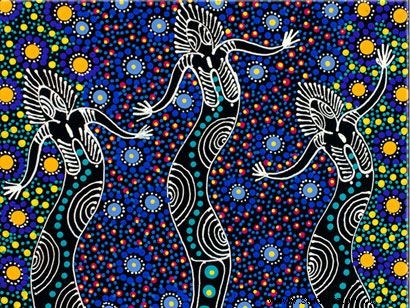
Around the time of British colonization in 1778, there were 250 indigenous languages. In addition, there were 500 different clan groups or 'nations'. Dreamtime stories differ from nation to nation and describe how ancestral beings, called the first people, brought the physical world to life. Indigenous peoples from Australia wanted to continue Dreamtime stories through dances, traditions, kinship structures and song lines.
A song line is also a 'Dreaming track' and is one of the paths in the physical world that marks the presence of ancestral beings. The tracks of the song lines are recorded in art, ceremonies and song cycles. The people of a particular song line region will be the guardians and the narrators of the history of that country. Various streams, rocks or indentations in the ground are the physical traces that trace the footprints and stories of the first people. For this reason, the country is sacred to Native Australians and an essential part of their identity.
The longest song line extends 3,500 kilometers across the country or 2,200 miles. This song line connects the Central Desert Region with the beaches on the east coast. The song lines are carried through the country through song and practice and passed on to future generations. The song lines how indigenous Australians keep the country alive.
Relations with the country

The Dreamtime stories show us that every rock, mountain, lake or tree has a story related to the first peoples of Indigenous Australians. They are passed down from generation to generation and connect people to Country in a deep and intimate way. Telling the stories of the country and the first people keeps the country healthy and alive. As a result, indigenous peoples have a strong sense of identity with the relationship with the country.
To Native Australians, Country means not just plants, rocks or places, but rather a complex relationship between all living things. Humans, plants, the first humans and animals. Country is a place, but it is also a sense of belonging and identity and a belief system. The dream is a story about what was, but also what the country still is today.
Rainbow worms
The most famous Dreamtime story tells of the Rainbow Serpent, an ancestral being who slept underground when it was empty and formless. One day he awoke from his sleep and went out on the surface of the earth, leaving long winding paths in the ground wherever he had been. She wandered for so long until she found her way back to where she had slept.
When she returned, she shouted for the frogs to come to the surface. So they did, with their stomachs full of water that they had stored during their sleep. The rainbow worm tickled them, and they could not stop laughing and spitting water everywhere. This water trickled into the tracks that the rainbow worm had left and became every river and stream on earth.
Eventually, other animals came to the surface to live under and around the trees that appeared by the lake. Rainbow Serpent created laws so that everyone could live peacefully on earth, but some of the animals caused problems. The Rainbow Serpent then said that if the animals obeyed the laws, they would be endowed with human form, and those who did not would be turned to stone. Those who broke the law became stones, which became mountains, hills and cliffs.
Those who obeyed the law, however, were gifted human beings to make it easier to walk the earth. So the rainbow worm divided them into clans and gave each one a totem. For example, emu, kangaroo or reptile from the region. Each clan could not eat its totem, but only hunted the other to ensure animal protection and that there would be food for all.
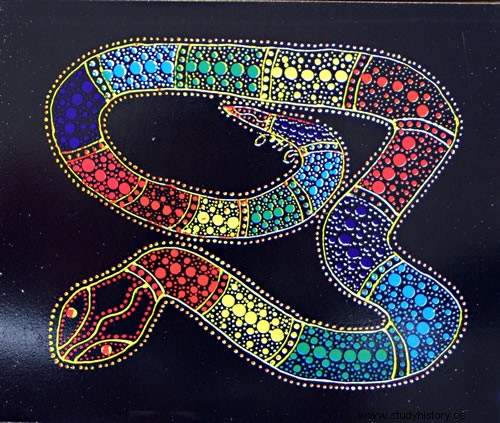
Rainbow Serpent Rituals
Rainbow Serpent is a significant part of indigenous peoples' Australian practices and Dreamtime stories. Some rituals are necessary to respect the Rainbow Serpent and ensure harmony with the natural world. For example, as you approach a waterhole, it is important to sing for the Spirit from a distance. In this way she knows that someone is coming and that they have good intentions. She can then also understand that these people know who she is and her power and are from that country.
As they sing to the rainbow worm from a distance, they will rub soil on their body so that she can smell them. Once this ritual is completed, it is safe to approach the water hole for drinking or swimming.
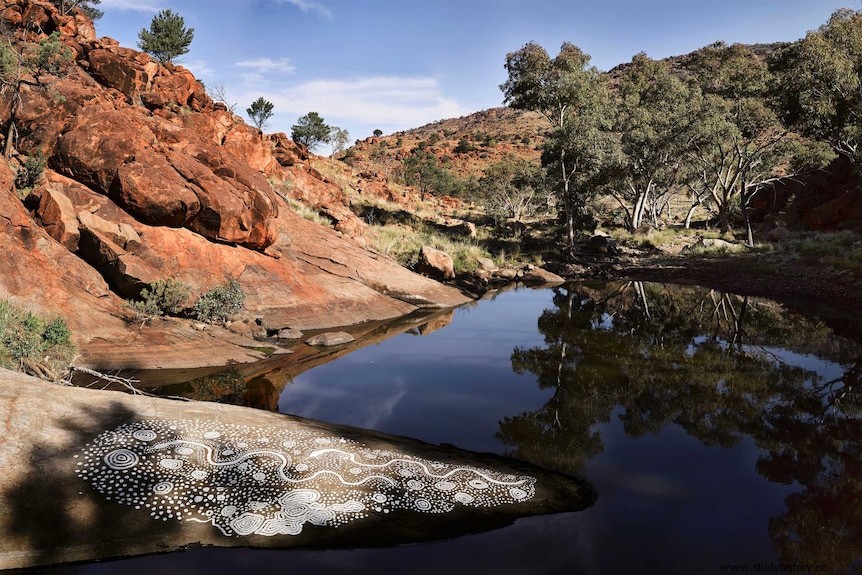
The Seven Sisters
Perhaps one of the most famous and told Dreamtime stories among indigenous peoples in Australia is the story of the seven sisters. The song line for this story stretches from the desert to the sea and carries across several languages, clans and dialects.
The Seven Sisters story is a mythology about what we call the star cluster of the Pleiades. The story goes that the group of stars are the Napaljarri sisters from a clan. The morning star, Jukurra-jukurra, from another clan called Jakmarra, is in love with the seven sisters. However, he is of the wrong clan or "skin name" and can not marry them. So he chases them across the sky, and they run from him.
Eventually, the seven sisters, who ran from the Jakmarra man, dig a cave in the side of a hill. When they come out on the other side and are desperate to get away, they shoot themselves up in the sky. After them, the man also shoots out into the sky, which we see every night when the Pleiades rise. It's the man Wati who shoots himself in the sky to chase the seven sisters.
The Dreamtime story of the seven sisters can be seen in many important indigenous peoples of Australian art.
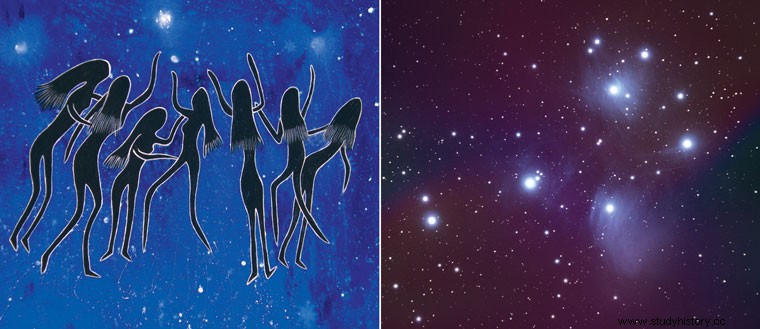
The story of Tiddalik
Another of the most told Dreamtime stories among Indigenous Australians is that of the Tiddalik frog. Tiddalik, the greatest frog in existence, awoke from a nap one day with such an indelible thirst that he decided to drink every drop of water on earth. As a result, every lake, river and puddle was empty.
It did not take long before the earth began to wither, and all the other animals gathered to find out what to do. In the end, they decided to take turns making the frog laugh, and in fact he would eventually laugh so hard that he would spit out his water.
Emu, kangaroo, kookaburra, lizards all told their best jokes to no avail. Eventually, the eel crawled up from the dry riverbed and began to twist itself into various shapes and knots. In the end, Tiddalik could not stop laughing and spit out all the water on earth and filled the lakes and water holes again.

Uluru dreams
It is difficult to express in English how Dreamtime stories are an ongoing spiritual connection with Country for Indigenous peoples from Australia. For Anangu in the central desert of Australia, the dream can be seen on Tjukupar, as they call the physical manifestation of the first humans.
For Anangu, the Uluru area is full of Tjukupar, which mark song lines above and around the rock. One of these is the story of the Mala people who came to Uluru to hold memorials or ceremonies. In preparation, they raised the ceremonial pole called Ngaltawata.
While Mala was preparing food for her mother, they were approached by some Wintalka men. The men invited the Mala to their mother. The Malawians said no, as preparations for their marrowing had already begun. The Wintalka men were angry and created an evil spirit called Kurpany to attack the Mala and destroy their entrails.
When Kurpany was on his way, a woman named Luunpa from another clan warned them that she had seen him attack. However, the Mala people ignored her. Because of this, Kurpany attacked and killed two of their men, while the rest of the Mala people fled to the south of the country. The singing line continues in this southern part of the country.
Today, Luunpa is still on Uluru, in the form of a large rock. The inma ceremonial pole is also there, a large part of the rock that stretches up along Uluru. There are no photographs of this part of Uluru as it is a sacred place. Indigenous peoples forbid the photographing of certain holy places and Tjukupar.
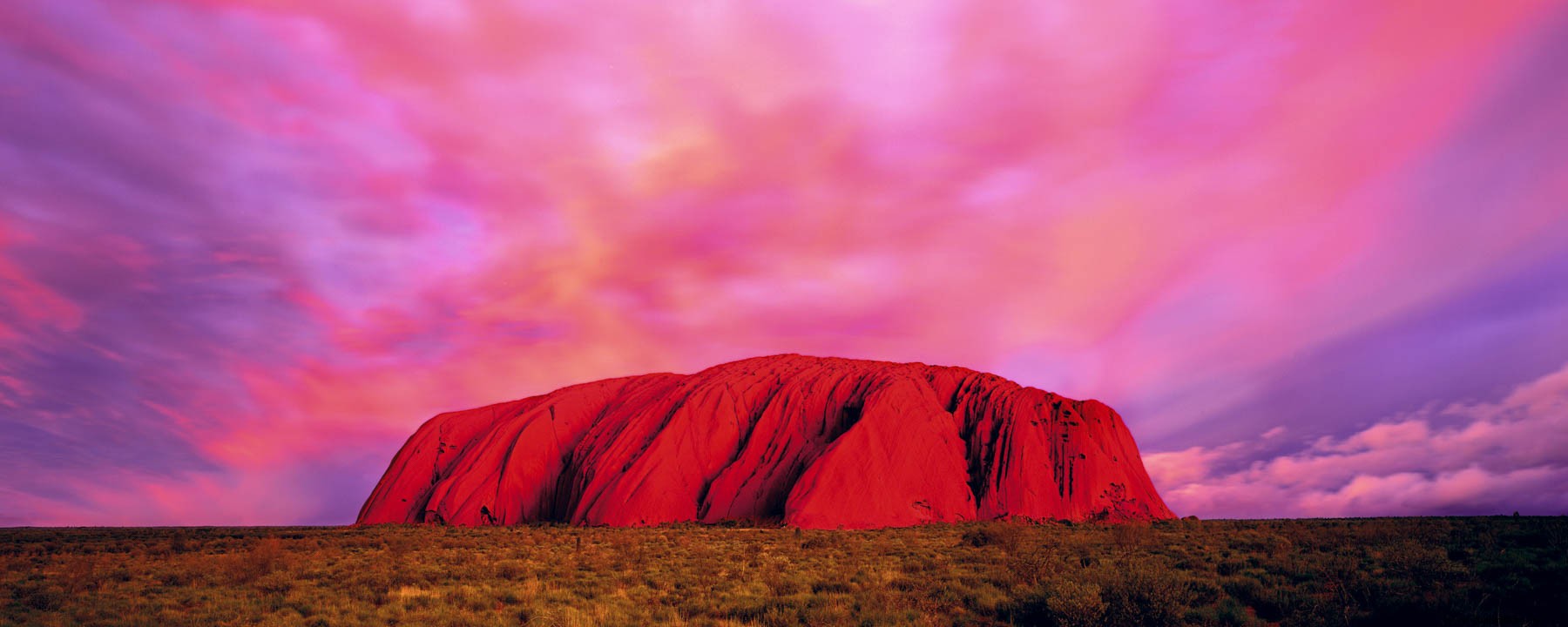
Dreamtime Hunting Central for Indigenous Peoples of Australia
The cosmology of the indigenous peoples is a genus and belief system and a way of protecting and maintaining the environment. Because indigenous peoples in Australia view the natural world and animals as their ancestors and relatives, they are responsible for protecting the environmental balance. It was specific hunting techniques and seasons that ensured that no species were ever threatened.
Dream time practice in hunting and fishing ensures that the country is maintained physically and spiritually. For example, there was a sacred cave in Arand land where the people kept sacred objects or food. Because the cave is a sacred, neutral area, hunting is not allowed in or around it. They will not track down a frightened or injured animal that has sought refuge in this area.
Overhunting never happens because the land is divided into limited or open areas for hunting, fishing or gathering. The ban on hunting totem animals also ensures this.
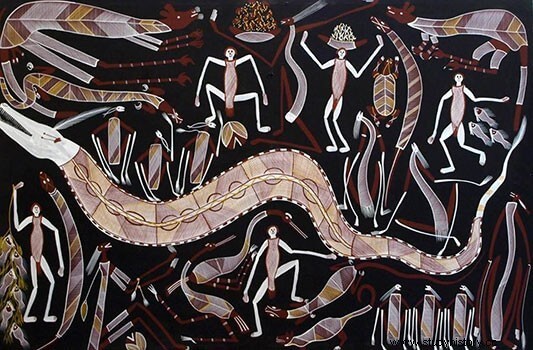
The importance of dream time for Indigenous peoples from Australia
For indigenous peoples of Australia, Dreamtime stories represent a shared sense of kinship with the natural world, animals, water, humans, and ancestral beings. Therefore, as we read the Dreamtime stories, we begin to see and feel the landscape as the indigenous people do.
The British colonization of Australia resulted in the contraction of diseases of the indigenous peoples. As a result, many indigenous peoples from Australia died during the first white years of settlement. They were also displaced from their traditional lands by violence and discrimination. This results in a rapid decline in the indigenous population of up to 80% in a few short years. Indigenous peoples who wanted to maintain their way of life were forced out of their countries and into the fringes of European society.
Native Australians also suffered atrocities with assimilation policies that included removing indigenous peoples from their clans to raise them in European orphanages and homes. In this way, they would be educated and 'civilized' to European lifestyles. Today, these children are now called the stolen generations. All of this caused a profound and devastating loss of cultural identity for the indigenous people.
Not only were they expelled from their land, but also their lineages related to the land and the song lines. Native Australians now have an even greater connection to telling and passing on Dreamtime stories. Today, telling Dreamtime stories is a way to repair and restore their cultural identity and reclaim their history.
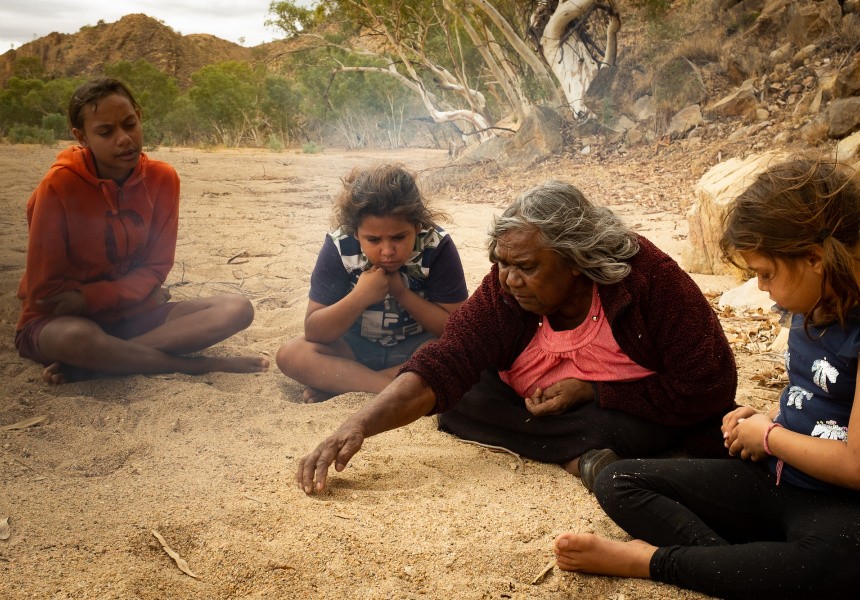
Cultural significance in anthropology
Indigenous peoples' Australian identity is intertwined with Dreamtime stories, rituals and hunting, which also form a large part of their family structure. This has always been of great interest to anthropologists, as it is incredibly unique and different from Euro-American ideas about kinship and personality.
The Dreamtime conveys a vastly different worldview and ideas about how people are related. For Indigenous peoples of Australia, there is a complex network of interconnected relationships that includes humans and non-humans. However, our concept of the individual as it exists in European philosophy and Enlightenment ideas that dominate our understanding of kinship and people is not present.
Many anthropologists have collaborated with indigenous peoples to gather knowledge about indigenous peoples' stories and lifestyles. Some anthropologists also work in the field of 'native title'. Native title is a branch of study that focuses on research and recycling of land that is sacred to indigenous peoples. This is not only important for the cultural identity of indigenous peoples, but they can then implement political measures to ensure that the country is protected from development. This is not only meaningful for indigenous peoples in Australia, but also for European Australians to create a shared identity through Dreamtime history and countries.
